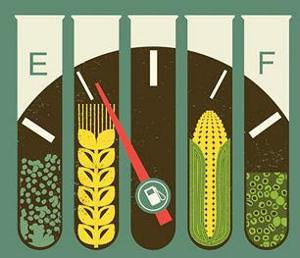Coimbatore :
Popularly known in our old Tamil folklore as the ‘Tree that cures’ or as the ‘Tree that protects’, the Punnai tree’s population along our coastal and river belts has been dwindling in the last three decades owing to its rich timber value. But scientists have now begun repopulating this tree for its biofuel and healing properties.

The bio-fuel produced from Punnai tree can run a machine like a pumpset or even a generator, say researchers. Scientists with the Institute of Forest Genetics and Tree Breeding (IFGTB) have managed to clone a few varieties of this tree, scientifically called as Calophyllum Inophyllum, rich in oilseeds, rather than timber.
“Not many people know that the oil extracted from the tree’s seeds can be used as a biofuel,” says the scientist who has been researching tree-borne oils for the past decade, Anandalakshmi Ravichandran. “It can be used to run pumpsets, generators and a lot of machinery that otherwise require petrol or diesel,” she says. A five-year-old well-looked Punnai tree can give a minimum of 4.2 litres of biofuel a year, or 2.1 litres per harvest.
“A tree older than five-years, which is watered well and fed bio-fertilizers, will produce at least 4-10 kg of oilseeds per harvest, which in turn produces 1kg to 2.5kg of kernel, from which oil can be extracted,” she added. Oilseeds from the tree can be harvested at least twice a year.
The tree, which is found in many parts of South India like the Andaman Islands, Kasargod, Sengottai, Cuddalore, Kutralam, Puducherry and Karaikal, unlike most can even survive on loose soil or sandy soil. “These trees are like mangroves and grow in the wild in the same conditions,” says Ravichandran, also the HOD of the seed technology department at IFGTB.
Scientists recommend that farmers choose the number of trees they want to cultivate based on their oil requirement. Around 35 trees can be planted in a one-acre land either on the perimeter or as intercrop. “These trees are natural wind shields, because they initially used to stop the salt carrying sea breeze from blowing into the agricultural lands,” says Ravichandran. The institute has sold 600 units of Punnai seedlings so far.
The drawbacks of growing or cultivating the tree is that it takes at least five to six years to mature, and start yielding fruits or oilseeds. “It will grow upto 15m in height and start producing even more than 10kg of fruits after its 10{+t}{+h} year,” she says. “Nobody realises this because they cut it down after it reaches its fifth year for timber, which is used to make catamarans and furniture,” she adds.
After a lot of research into Punnai trees in its natural habitats, scientists short-listed 156 genetically superior trees across Kerala, Karnataka, Tamil Nadu and Andamans.
Seedlings of these varieties are on sale at the IFGTB nursery for Rs20
source: http://www.timesofindia.indiatimes.com / The Times of India / News Home> City> Coimbatore / TNN / October 01st, 2015